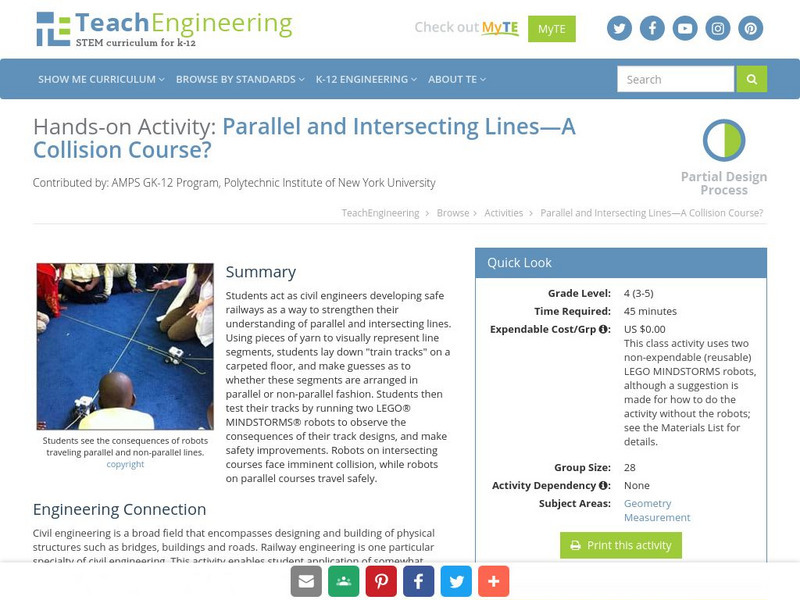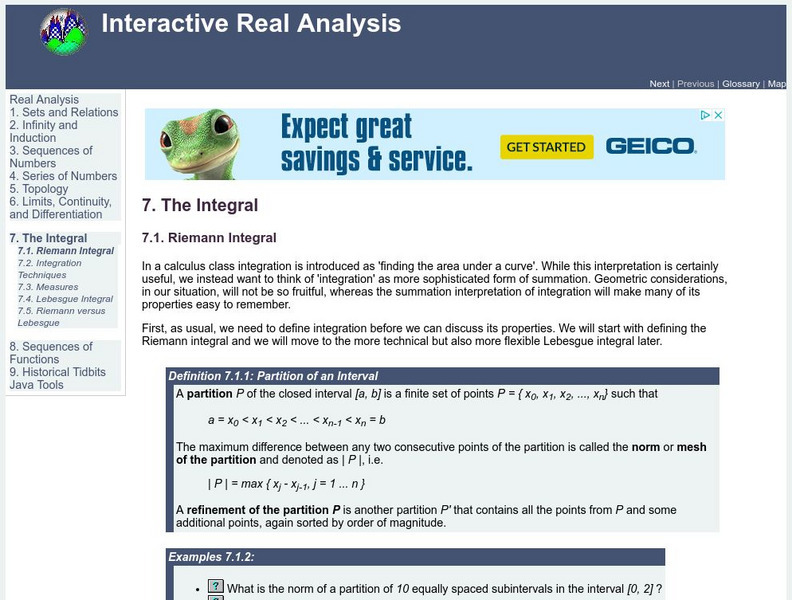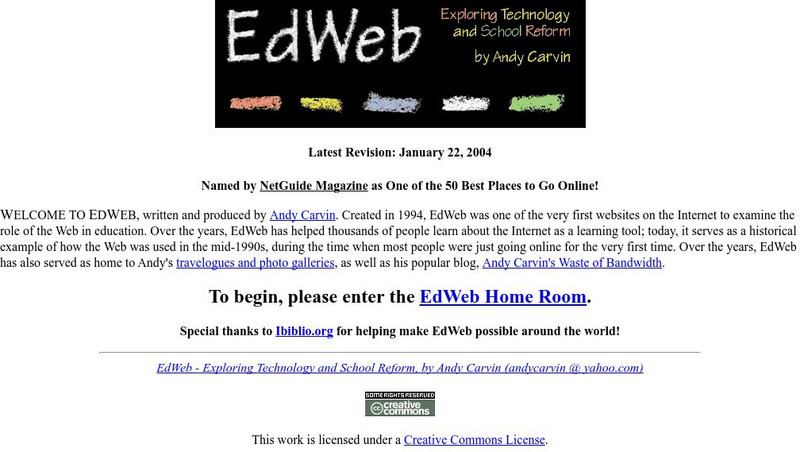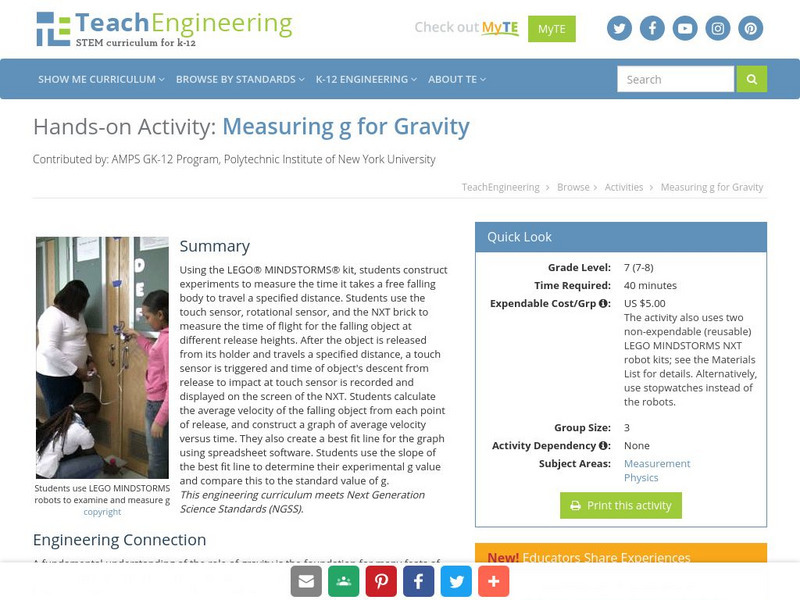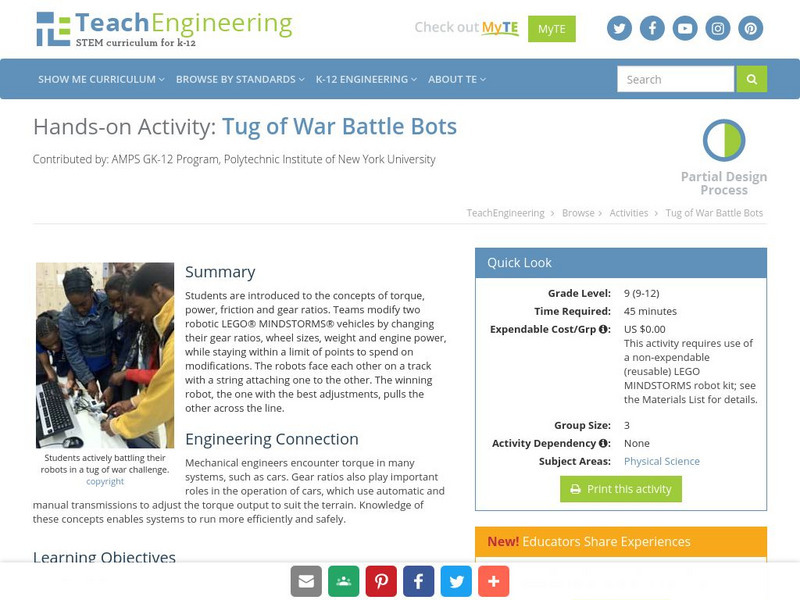University of Maryland
University of Maryland: Line Integrals and Conservative Vector Fields
This resource explains line integrals in relation to conservative vector fields. It contains example problems with solutions and additional problems to work.
Wolfram Research
Wolfram Math World: Line Integral
Use this site to find the formula for the line vector of a field on a curve. Also included is the formula for complex plane circumstances. Read further down the page for higher math involving involveing Poincare's
Paul Dawkins
Paul's Online Notes: Calculus Iii: Line Integrals
The resource examines line integrals and interpretations of the line integral. Topics investigated are the fundamental theorem for line integrals, Green?s theorem, and conservative vector fields. Class notes, definitions, and examples...
Mathematics Archives
Math Archives: Line Integral
At this site the student can download a program to do line integrals.
TeachEngineering
Teach Engineering: Whose Field Line Is It, Anyway?
Students teams each use a bar magnet, sheet of paper and iron shavings to reveal the field lines as they travel around a magnet. They repeat the activity with an electromagnet made by wrapping thin wire around a nail and connecting...
Hofstra University
Hofstra University: The Indefinite Integral
Nice on-line tutorial site. The site explains the Anti derivative, gives formulas for finding the anti derivative of various general forms, and has examples the student can work on-line
TeachEngineering
Teach Engineering: The Challenge Question: "Walk the Line"
Students are introduced to the "Walk the Line" challenge question. They are asked to write journal responses to the question and brainstorm what information they need to answer the question. Ideas are shared with the class (or in pairs...
San Francisco Museum of Modern Art
Sfmoma: Art Communicates Moods Through Line & Color
A lesson plan that has students creating simple images to represent different emotions. Also includes ideas for integrating language arts and social studies topics into the arts.
TeachEngineering
Teach Engineering: Parallel and Intersecting Lines: A Collision Course?
Students act as civil engineers developing safe railways as a way to strengthen their understanding of parallel and intersecting lines. Using pieces of yarn to visually represent line segments, students lay down "train tracks" on a...
TeachEngineering
Teach Engineering: Visualizing Magnetic Field Lines
In this activity, students take the age old concept of etch-a-sketch a step further. Using iron filings, students begin visualizing magnetic field lines. To do so, students use a compass to read the direction of the magnet's magnetic...
Other
Seton Hall University: Riemann Integral
On-line tutorial explaining the Riemann Integral. Gives good diagrams, charts, and examples.
TeachEngineering
Teach Engineering: The Electric and Magnetic Personalities of Mr. Maxwell
Students are briefly introduced to Maxwell's equations and their significance to phenomena associated with electricity and magnetism. Basic concepts such as current, electricity and field lines are covered and reinforced. Through...
Other
Ed Web: Homepage
EdWeb explores educational reform and information technology. "With EdWeb, you can hunt down on-line educational resources around the world, learn about trends in education policy and information infrastructure development, examine...
Other
Ed Web: Homepage
EdWeb explores educational reform and information technology. "With EdWeb, you can hunt down on-line educational resources around the world, learn about trends in education policy and information infrastructure development, examine...
ArtsNow
Arts Now Learning: Using Movement and Dance to Explore Symmetry [Pdf]
In this lesson, 3rd graders first examine images and decide whether they are symmetrical or not. Next, they create individual symmetrical shapes with their bodies and identify the line of symmetry present during these shapes. They then...
PBS
Pbs Teacher Line: Professional Development for Educators
PBS TeacherLine offers a wide range of professional development courses and resources to help teachers acquire the skills they need. Through this site you can explore courses in your area, facilitated discussions with teachers across the...
Hofstra University
Hofstra University: Calculus Applied to the Real World
This is a very nice layout of information relative to Calculus. The page is divided into various topics each containing a quiz over the material, topic summary, review problems, and on line tools to help with the topic. The topics of the...
TeachEngineering
Teach Engineering: Graphing Equations on the Cartesian Plane: Slope
The lesson teaches students about an important characteristic of lines: their slopes. Slope can be determined either in graphical or algebraic form. Slope can also be described as positive, negative, zero or undefined. Students get an...
Other
Harvard University: Project Zero: Artful Thinking
Find engaging ways to integrate visual art and music into regular classroom instruction and strengthen cognitive thinking skills and abilities to reason creatively from multiple perspectives. Get great classroom questioning tips, case...
TeachEngineering
Teach Engineering: A Lego Introduction to Graphing
Students use a LEGO ball shooter to demonstrate and analyze the motion of a projectile through use of a line graph. This activity involves using a method of data organization and trend observation with respect to dynamic experimentation...
TeachEngineering
Teach Engineering: Measuring G
Using the LEGO MINDSTORMS NXT kit, students construct experiments to measure the time it takes a free falling body to travel a specified distance. Students use the touch sensor, rotational sensor, and the NXT brick to measure the time of...
TeachEngineering
Teach Engineering: Tug of War Battle Bots
Students are introduced to the concepts of torque, power, friction and gear ratios. Teams modify two robotic LEGO vehicles by changing their gear ratios, wheel sizes, weight and engine power, while staying within a limit of points to...
TeachEngineering
Teach Engineering: Drawing Magnetic Fields
Students use a compass and a permanent magnet to trace the magnetic field lines produced by the magnet. By positioning the compass in enough spots around the magnet, the overall magnet field will be evident from the collection of arrows...
TeachEngineering
Teach Engineering: Circuits and Magnetic Fields
In this activity, students use the same method as in the activity from lesson 2 to explore the magnetism due to electric current instead of a permanent magnet. Students use a compass and circuit to trace the magnetic field lines induced...







